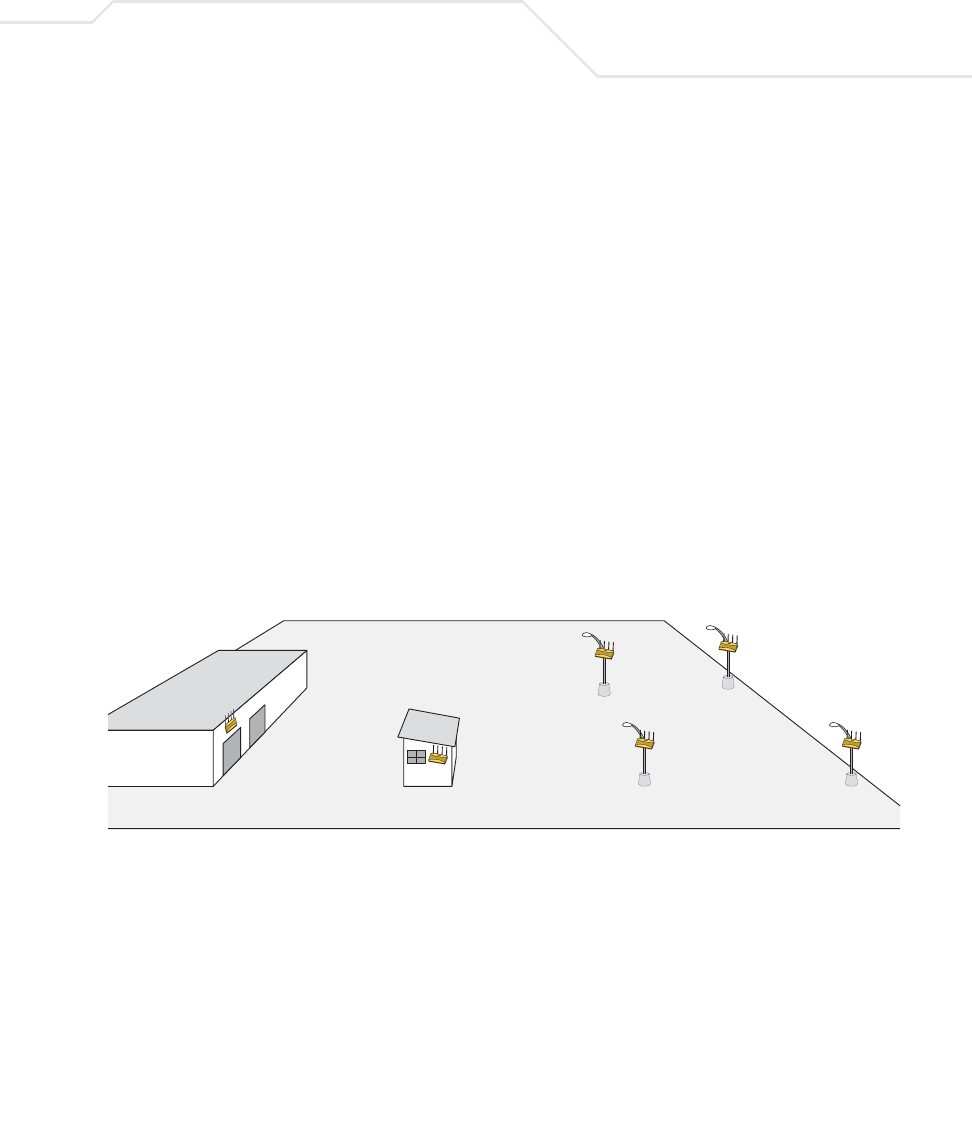User Manual Part 3
Table Of Contents
- Introduction
- 1.1 New Features
- 1.2 Feature Overview
- 1.2.1 Single or Dual Mode Radio Options
- 1.2.2 Separate LAN and WAN Ports
- 1.2.3 Multiple Mounting Options
- 1.2.4 Antenna Support for 2.4 GHz and 5.2 GHz Radios
- 1.2.5 Sixteen Configurable WLANs
- 1.2.6 Support for 4 BSSIDs per Radio
- 1.2.7 Quality of Service (QoS) Support
- 1.2.8 Industry Leading Data Security
- 1.2.9 VLAN Support
- 1.2.10 Multiple Management Accessibility Options
- 1.2.11 Updatable Firmware
- 1.2.12 Programmable SNMP v1/v2/v3 Trap Support
- 1.2.13 Power-over-Ethernet Support
- 1.2.14 MU-MU Transmission Disallow
- 1.2.15 Voice Prioritization
- 1.2.16 Support for CAM and PSP MUs
- 1.2.17 Statistical Displays
- 1.2.18 Transmit Power Control
- 1.2.19 Advanced Event Logging Capability
- 1.2.20 Configuration File Import/Export Functionality
- 1.2.21 Default Configuration Restoration
- 1.2.22 DHCP Support
- 1.2.23 Multi-Function LEDs
- 1.3 Theory of Operations
- Hardware Installation
- Getting Started
- System Configuration
- Network Management
- Configuring Access Point Security
- 6.1 Configuring Security Options
- 6.2 Setting Passwords
- 6.3 Enabling Authentication and Encryption Schemes
- 6.4 Configuring Kerberos Authentication
- 6.5 Configuring 802.1x EAP Authentication
- 6.6 Configuring WEP Encryption
- 6.7 Configuring KeyGuard Encryption
- 6.8 Configuring WPA Using TKIP
- 6.9 Configuring WPA2-CCMP (802.11i)
- 6.10 Configuring Firewall Settings
- 6.11 Configuring VPN Tunnels
- 6.12 Configuring Content Filtering Settings
- 6.13 Configuring Rogue AP Detection
- 6.14 Configuring User Authentication
- Monitoring Statistics
- Command Line Interface Reference
- Configuring Mesh Networking
- Technical Specifications
- Usage Scenarios
- Customer Support
- Index

Configuring Mesh Networking
9-37
9.3.3 Adding 2 More Client Bridges to the Trion Network
After an additional six months with their existing 4 access point mesh network, Trion Enterprises
needs and approves the addition of two additional access points (AP5 and AP6) to be configured as
client bridges. The team will configure AP5 and AP6 as client bridges and not base bridges or
repeaters since Trion Enterprises does not plan to expand its shipping yard and the mesh network
would have all the access points needed to support it. Thus, one AP5 and AP6 radio will be providing
mesh coverage to the outer portion of the shipping yard without having to provide base bridge or
repeater support to new members of the mesh network. The remaining AP5 and AP5 radio can support
shipping yard MU traffic using a non-mesh WLAN.
To configure AP5 and AP6 as client bridges, the IT Team does the following:
1. The Trion IT department verifies connectivity with AP5 and AP6 following the instructions in
Testing Connectivity on page 3-11.
2. The Trion IT Department installs AP5 and AP6 on light poles (in a new expanded are of the
shipping yard) where power has been made available and a secure mesh network (APs 1-4)
is within broadcast range (see the illustration below). The Trion IT department follows the
instructions in Wall Mounted Installations on page 2-14 to install AP5 and AP6.
s
AP1
AP2
AP3
AP4
AP5
AP6










